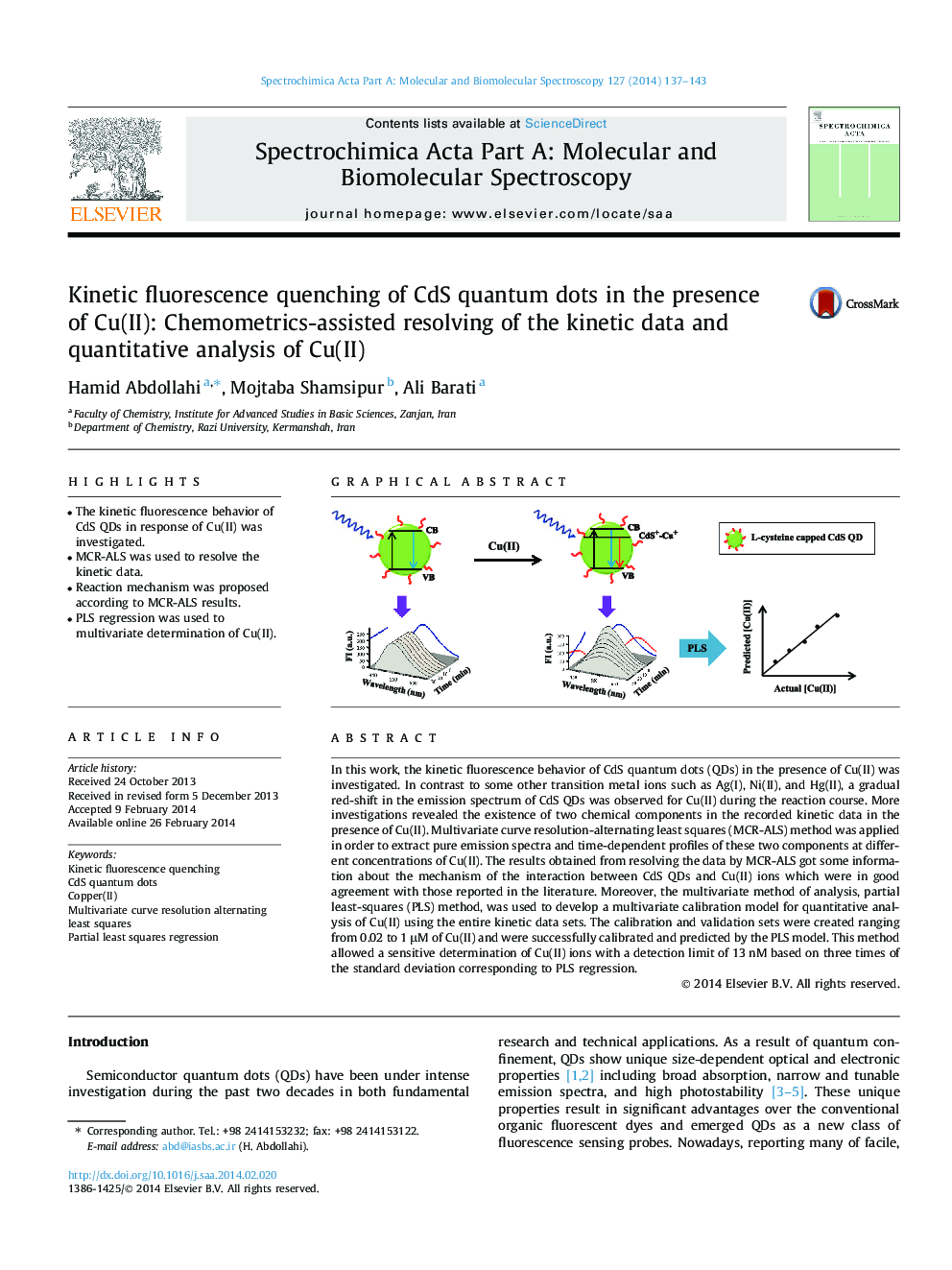| Article ID | Journal | Published Year | Pages | File Type |
|---|---|---|---|---|
| 1233968 | Spectrochimica Acta Part A: Molecular and Biomolecular Spectroscopy | 2014 | 7 Pages |
•The kinetic fluorescence behavior of CdS QDs in response of Cu(II) was investigated.•MCR-ALS was used to resolve the kinetic data.•Reaction mechanism was proposed according to MCR-ALS results.•PLS regression was used to multivariate determination of Cu(II).
In this work, the kinetic fluorescence behavior of CdS quantum dots (QDs) in the presence of Cu(II) was investigated. In contrast to some other transition metal ions such as Ag(I), Ni(II), and Hg(II), a gradual red-shift in the emission spectrum of CdS QDs was observed for Cu(II) during the reaction course. More investigations revealed the existence of two chemical components in the recorded kinetic data in the presence of Cu(II). Multivariate curve resolution-alternating least squares (MCR-ALS) method was applied in order to extract pure emission spectra and time-dependent profiles of these two components at different concentrations of Cu(II). The results obtained from resolving the data by MCR-ALS got some information about the mechanism of the interaction between CdS QDs and Cu(II) ions which were in good agreement with those reported in the literature. Moreover, the multivariate method of analysis, partial least-squares (PLS) method, was used to develop a multivariate calibration model for quantitative analysis of Cu(II) using the entire kinetic data sets. The calibration and validation sets were created ranging from 0.02 to 1 μM of Cu(II) and were successfully calibrated and predicted by the PLS model. This method allowed a sensitive determination of Cu(II) ions with a detection limit of 13 nM based on three times of the standard deviation corresponding to PLS regression.
Graphical abstractFigure optionsDownload full-size imageDownload as PowerPoint slide
